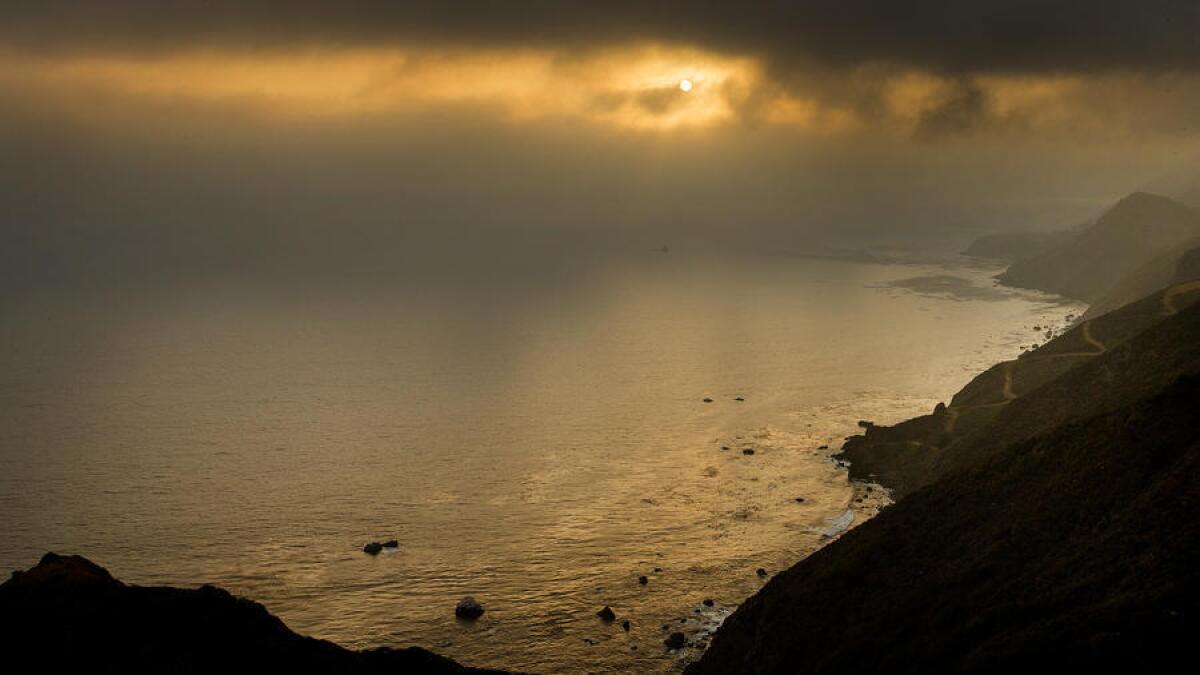Column: Year in Review: California’s coast faced a tsunami of threats in 2016

- Share via
My youth, which played out in the middle of the last century, never seemed boring or perilous despite the absence of smart phones and seat belts.
The natural, physical landscape beckoned, and I was luckier than most.
I grew up in California.
In the summers of my youth, the Sacramento-San Joaquin air was baked and dry breezes smelled like straw. We had to escape, if only for a week.
So we loaded the Dodge Coronet, three unbelted kids in the back seat, and went to the coast.
The destination was always the same.
Santa Cruz.
The salt air. The morning fog. The squawking gulls. The mysteries of the underwater universe. The nighttime thunder of crashing waves.
Imagine my luck, more than half a century later, to be sent back to my childhood paradise for “work.”
The year 2016 marks, after all, the 40th anniversary of the Coastal Act, a magnificent concept dreamed up by an army of California citizens who loved the coast as much as I did and campaigned to codify preservation and public access.
It also marked a year of turmoil at the California Coastal Commission, where the beloved executive director was all but locked into stocks and summarily dismissed, without explanation, by political appointees.
Silence, meanwhile, from Gov. Jerry Brown, who signed the Coastal Act into law in 1976 but never seemed fond of the agency formed to enforce it.
Droughts, fires, and the Big One that wasn’t: California’s year in review »
As my Los Angeles Times colleagues and I reported throughout the year, the development lobby — eager to tinker with California’s greatest resource — was all too cozy with commissioners.
Lobbyists routinely met privately with commissioners and then handed the commissioners the notes on what to enter into the public record. Commissioners also failed to report private meetings with developers, and a business manager for the biggest lobbying firm wrote campaign checks to two commissioners, one of whom then voted to support a project backed by the firm.
It all had the whiff of leftover bait, pelican poop and rotted kelp.
So my trip along the 1,100-mile coast, from Oregon to Mexico, was more than an exercise in nostalgia. It was a crusade, a celebration of preservation victories, a rumination on the losses, and a call for sturdier defense of one of the world’s greatest natural resources, for the infinite enjoyment of everyone regardless of address or income.
I did not travel solo. I moved with a Huntington Beach artist/surfer/diver who loves, as much as I do, the redwood waltz at the shore near the Oregon border, the glorious isolation of the Lost Coast, the pine-scented thrill of Monterey Bay, the remoteness of the Gaviota Coast, the graceful curve of Santa Monica Bay and the charm of the La Jolla Coves.
Photos: Stunning images along California’s coast »
Times photographer Allen Schaben feasted on the wonders, chasing light that crept over rocky promontories, electrified the open waters and fell in hushed sunset hues over vast horizons. He worked 16 hours a day for six weeks and his photographs belong somewhere else, besides the newspaper. A museum, maybe, or between the covers of a big art book.
Neither of us wanted it to end. It was a cushy junket, but the greater purpose was to tell stories in a way that inspired future stewards to uphold California’s unique legacy of coastal preservation, and to remind elected and appointed officials that we’re watching.
The affair began many years ago, when the coast was, for me, a destination. In 2016, speaking up for it became a duty.
Twitter: @LATstevelopez
Get more of Steve Lopez’s work and follow him on Twitter @LATstevelopez
More to Read
Sign up for Essential California
The most important California stories and recommendations in your inbox every morning.
You may occasionally receive promotional content from the Los Angeles Times.














